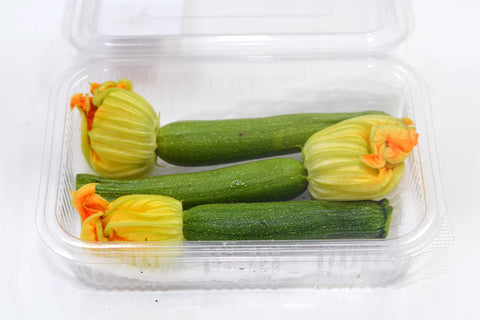Rs. 160.00
The true scallion. Not a spring onion which is what most cooks in India commonly use when the recipe requires scallions. Milder in taste. Also called bunching onions in some parts of the world.
Bunching onions are a scallion and never form a bulb and have hollow leaves. The leaves are prized when cooking unlike the more difficult leaves of the spring onion. Other names for Bunching Onion are Welsh Onion and Long Green Onion.
Both the white and the green parts are used in recipes and eaten both raw and cooked. These fresh young onions are identified by their slender shape and mild flavor. The white stalk has the same sharp, onion taste though with less bite, while the dark green leaves have a fresher, grassy milder flavor.
A popular ingredient in Asian cuisine, especially in East and Southeast Asia. It is particularly important in China, Japan, and Korea, even more than the bulb onion so common elsewhere. In the West, bunching onion is primarily used as a scallion or salad onion.
Scallions are mild enough that both the whites and the greens can be eaten raw, as in scallion salad, a popular side dish for Korean barbecue, or as a crunchy garnish for soups, and chili, and potato puree. Raw scallion whites and greens can be pickled whole or fermented in kimchi. Whole scallions are delicious grilled or roasted—the leaves become charred and the the whites tender and sweet.
Many stir-fry recipes call for separating the whites and the greens. This method mellows out the sharp flavor of the bulb, while allowing the raw greens to stay fresh as a garnish. An added bonus? The scallion whites are usually the first ingredient in the wok, infusing the cooking oil with their aromatics and flavoring the rest of the stir-fry.

Rs. 230.00
Baby Green zucchini blossoms are fragile, yet as long as they are attached to the fruit of the plant, the fruit will extend the blossom's shelf-life. The tissue paper thin blossoms are faintly fuzzed, light weight and once mature their broad and pointed flower petals will close inward.Not Available at present - Rs. 200.00
Broccoli is from the same family of cabbage and cauliflower, so can be substituted in many Indian dishes that phool gobi and patta gobi are used in.